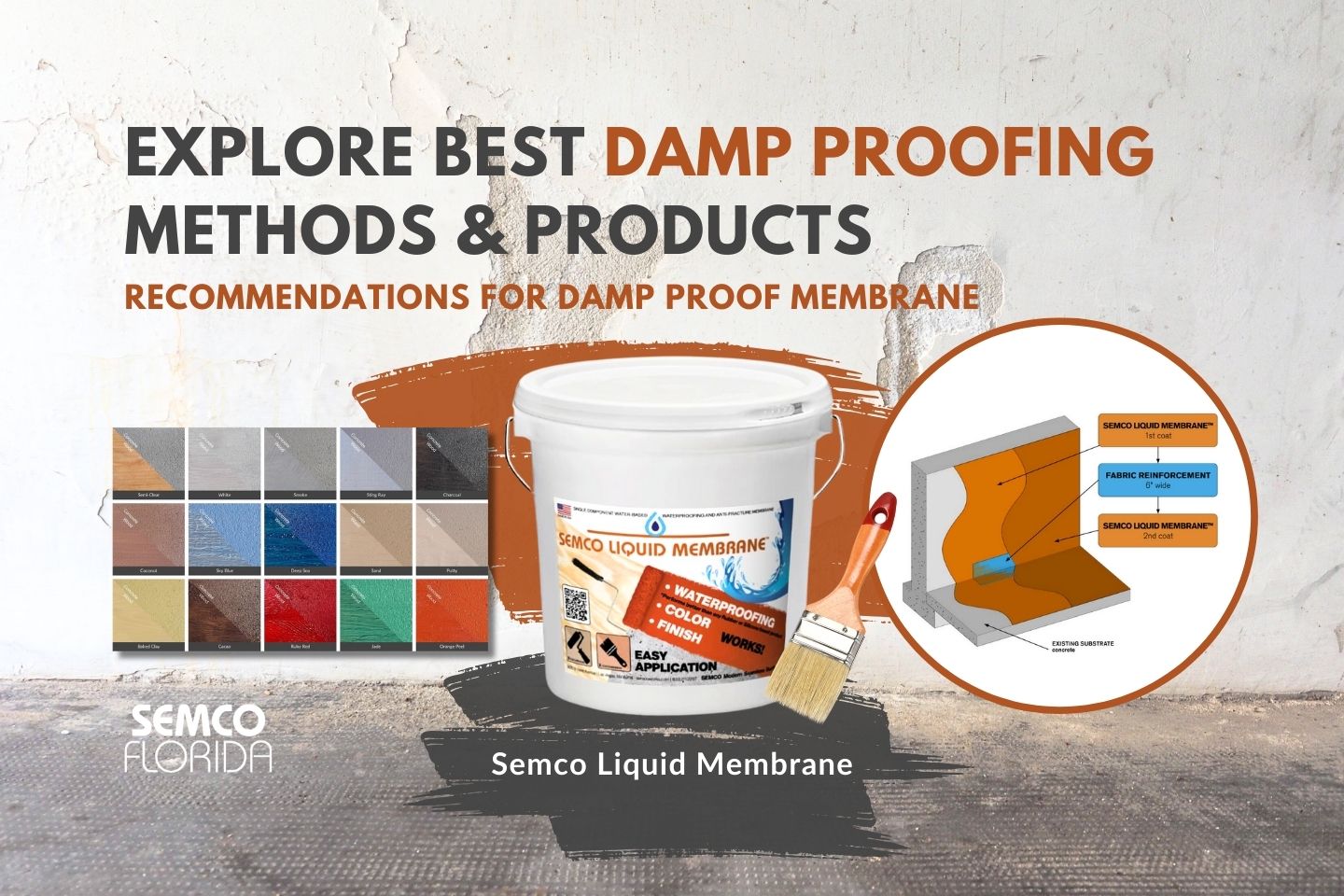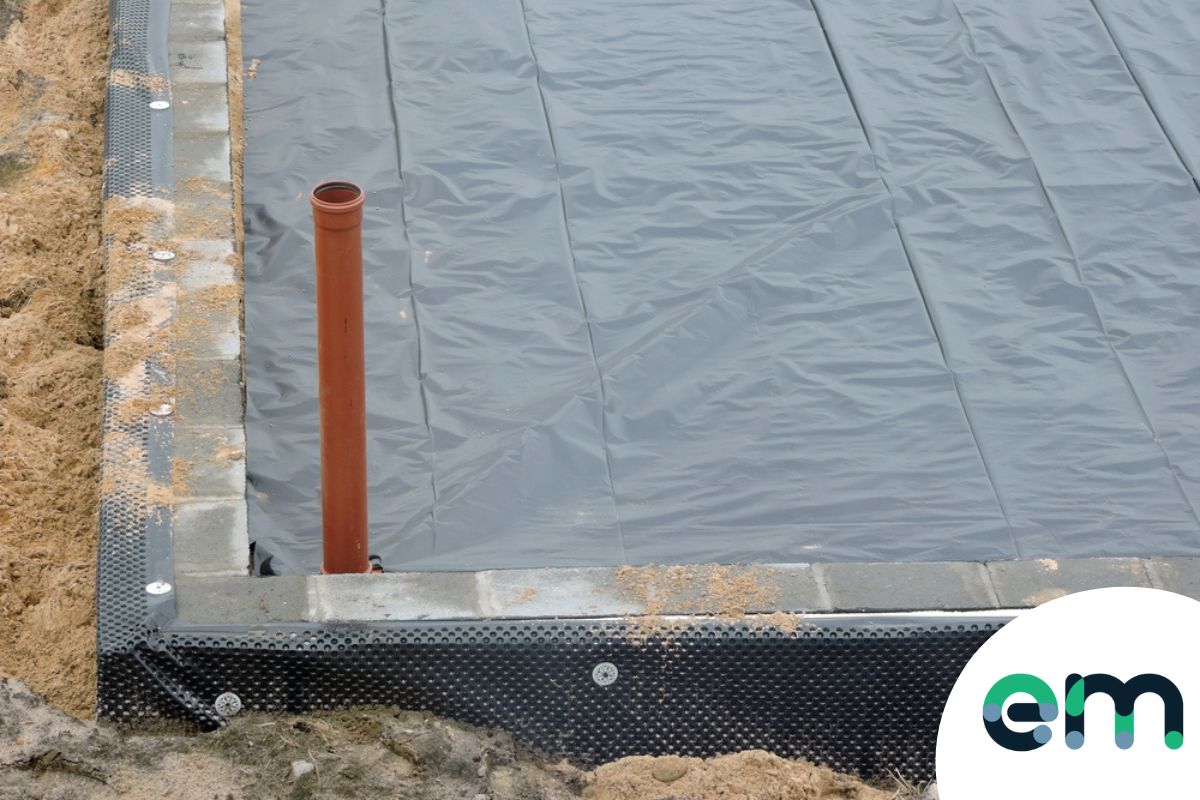How to recognize early symptoms of rising damp: A must-read for property owners in damp proofing newcastle
How to recognize early symptoms of rising damp: A must-read for property owners in damp proofing newcastle
Blog Article
Checking Out the Different Strategies and Solutions for Effective Damp Proofing
Dampness in buildings presents substantial difficulties to both architectural integrity and indoor air quality. Various methods and remedies have arised to battle this pervasive issue. From standard damp-proof membranes to innovative chemical treatments, each approach offers unique advantages. Recognizing these alternatives is important for efficient wetness control. Picking the right remedy depends on specific structure conditions and needs, motivating further exploration right into the most reliable moist proofing methods offered.
Recognizing the Reasons of Moisture
Moisture can arise from numerous sources, recognizing these causes is vital for efficient removal. Commonly, wetness originates from 3 key sources: increasing damp, permeating moist, and condensation. Climbing moist takes place when groundwater takes a trip upwards via porous materials, such as block or rock, commonly as a result of a lack of a reliable barrier (damp removal newcastle). Permeating wet is usually triggered by outside variables, including roof covering leakages, malfunctioning rain gutters, or damaged wall surfaces, allowing water to penetrate a residential property. Condensation, on the other hand, results from excess dampness in the air, usually worsened by inadequate air flow and temperature differences, causing water beads basing on surface areas. Determining these underlying concerns is crucial, as each type of moisture calls for a tailored strategy for remediation. Appropriate evaluation helps in figuring out the most effective options, inevitably protecting the architectural honesty of a building and enhancing interior air top quality
Standard Damp-Proof Membrane Layers

Chemical Damp-Proofing Solutions
Chemical damp-proofing options use an ingenious method to avoid dampness breach in structures. These approaches generally involve the application of fluid chemicals that pass through stonework and create an obstacle against rising moist. Frequently used chemicals include silanes, siloxanes, and other water-repellent agents that react with surface area products to create a hydrophobic layer.The application process typically calls for exploration openings right into the walls, injecting the chemical remedy, and permitting it to treat. This method is especially beneficial for older structures where typical damp-proof membrane layers might be impractical. Additionally, chemical damp-proofing can be less disruptive and extra cost-efficient than considerable restoration projects.While effective, these solutions depend upon proper application and ecological conditions for peak efficiency. Regular maintenance and tracking are important to ensure the long life of the damp-proofing treatment. On the whole, chemical damp-proofing stands for a functional option for securing structures versus moisture-related damage
Dental Caries Wall Building And Construction Techniques
Tooth cavity wall surface construction strategies offer various advantages, specifically in dampness control and energy efficiency. By integrating an air void between 2 layers of stonework, these walls successfully mitigate water ingress while improving insulation. This mix not just protects structures from moisture yet also contributes to decreased energy intake.
Advantages of Dental Caries Wall Surfaces
When considering efficient moist proofing techniques, the benefits of dental caries wall surfaces stand out prominently. Cavity walls include 2 separate layers, producing an air gap that properly decreases moisture penetration. This design lessens the threat of wetness, as the external wall surface works as an obstacle versus rain and water ingress. Furthermore, dental caries wall surfaces improve thermal insulation, which adds to energy effectiveness by decreasing heat loss. They also offer sound insulation, assisting to develop a quieter interior setting. The air space allows for ventilation, which aids in dampness control and minimizes the possibility of mold development. These advantages not only boost the general comfort of a structure however likewise add to its long life and architectural honesty.
Wetness Control Strategies
Effective wetness control strategies are vital in dental caries wall building and construction to guarantee long-lasting defense against moisture. One key method includes the unification of weep openings, which help with water drainage from the dental caries, avoiding build-up. In addition, making use of breathable membrane layers can help handle dampness degrees while allowing trapped vapor to leave. Correct positioning of insulation is additionally vital, as it needs to not block drain courses. Ensuring that the external leaves of the dental caries wall are created with waterproof materials improves general longevity. Normal upkeep checks are essential to identify any blockages or damage early, guarding the structure's integrity. Ultimately, a combination of these methods develops a robust defense against dampness invasion in cavity wall surfaces.
Insulation and Energy Effectiveness
Insulation plays an essential duty in boosting power performance within dental caries wall surface building. By integrating protecting products, these walls create a thermal obstacle that lessens warm loss and decreases power intake. Efficient insulation not only aids maintain a secure indoor temperature but additionally minimizes the threat of moisture, as it stops condensation within the wall dental caries. Numerous methods, such as the use of inflexible foam boards or mineral wool, can be employed to attain excellent insulation performance. Additionally, appropriate installment is vital to ensure that voids and voids are reduced, which can or else jeopardize power effectiveness. Ultimately, a well-insulated dental caries wall adds considerably to overall sustainability and reduces heating & cooling costs for home owners.
Outside Damp Proofing Approaches
External damp proofing approaches are vital for protecting frameworks from moisture seepage. Two effective methods consist of the application of waterproof membrane layers and the installation of French drains pipes. These services aid reduce water buildup and protect the honesty of buildings.
Waterproof Membrane Layer Application
While various approaches exist for avoiding dampness ingress, the application of water-proof membranes stays a very reliable external wet proofing technique. These membranes are generally made from materials such as polyethylene, rubber, or customized bitumen, providing a robust barrier against water infiltration. The setup procedure involves applying the membrane layer to the external surfaces of walls or foundations, making sure complete protection to stop leakages. Proper attachment and securing at joints are important to making best use of efficiency. Water resistant membrane layers can be applied in different kinds, including fluid coatings and sheet membranes, allowing for flexibility based upon the details needs of the framework. This approach not only protects structures from wetness yet additionally improves their long life and structural stability.
French Drainpipe Setup
One efficient technique for handling groundwater and preventing moisture accumulation around a structure's structure is the installment of a French drainpipe. This drain system contains a trench full of gravel and a perforated pipe that redirects surface water far from the structure. Proper installment requires mindful planning, making sure that the drainpipe inclines far from the structure to promote ideal water circulation. Furthermore, the location of the drain is essential; it must be positioned in locations susceptible to merging or excess wetness. Regular upkeep, including clearing up debris from the crushed rock and guaranteeing the pipeline stays unhampered, is necessary for long-lasting performance. Eventually, a well-installed French drainpipe can significantly reduce the risk of water-related concerns in structures and basements.
Inside Waterproofing Strategies
Inside waterproofing strategies are crucial for securing a structure's interior from wetness seepage and prospective water damages. These strategies commonly include the application of customized materials and strategies developed to create a moisture obstacle within the framework. One common method is using water-proof finishings or sealers on walls and floors, which stop moisture from permeating surfaces.Additionally, mounting interior water drainage systems, such as sump pumps, can effectively handle water buildup in basements and creep spaces. One more approach involves making use of vapor obstacles, which are installed to prevent dampness activity from the ground into living spaces.Moreover, resolving any cracks or voids in wall surfaces or structures with suitable sealers guarantees a detailed protection versus water breach. By carrying out these interior waterproofing methods, homeowner can substantially reduce the danger of mold and mildew development, structural damages, and various other moisture-related concerns. Correct execution of these strategies is essential for long-lasting security and structure integrity.
Regular Maintenance and Evaluation Practices
Regular maintenance and inspection techniques are essential for assuring the long-lasting effectiveness of damp proofing solutions in any kind of structure. Routine checks allow homeowner to determine very early signs of moisture invasion, such as peeling paint, mold growth, and moldy odors. These indications can indicate underlying issues that call for instant attention.Inspections should be performed a minimum of each year, concentrating on vulnerable locations like basements, creep areas, and outside walls. During these analyses, residential or commercial property proprietors need to analyze sealers, drain systems, and ventilation to confirm they function correctly.Additionally, preserving downspouts and rain gutters is vital, as clogged systems can cause water build-up near the structure. Executing a normal maintenance routine, along with timely fixings, can considerably expand the lifespan of moist proofing actions and safeguard the structural stability of the structure. Aggressive steps inevitably contribute to the general health and wellness of the living atmosphere.
Regularly Asked Inquiries
For How Long Does Damp Proofing Usually Last?
The period of wet proofing efficiency differs, commonly lasting between 20 to half a century. Variables such as application quality, environmental conditions, and maintenance methods greatly influence the long life of the damp proofing treatment.

Can I Damp Proof My Home Myself?
The specific considered the usefulness of DIY damp proofing. With correct research study and the damp removal newcastle appropriate materials, it is feasible. However, they additionally recognized the relevance of specialist assistance to guarantee durable performance and avoid future issues.
What Are the Signs of Inefficient Damp Proofing?
Signs of inadequate moist proofing consist of consistent musty smells, visible mold and mildew growth, peeling off paint, moist patches on walls, and timber degeneration - mould removal newcastle. Home owners ought to resolve these issues promptly to stop additional damages and wellness worries
Does Damp Proofing Affect Indoor Air High Quality?

Exactly How Much Does Specialist Damp Proofing Expense?
Professional wet proofing expenses vary considerably, typically ranging from $1,000 to $5,000 depending upon the residential or commercial property's dimension, the level of the damp problem, and selected approaches. Each situation needs a customized analysis for exact pricing. Typically, moisture stems from 3 primary sources: increasing moist, passing through wet, and condensation. When considering effective moist proofing techniques, the benefits of dental caries wall surfaces stand out plainly. Exterior wet proofing approaches are important for safeguarding structures from wetness seepage. While numerous approaches exist for preventing moisture ingress, the application of waterproof membranes remains a highly effective exterior moist proofing method. Indications of inadequate wet proofing include consistent mildewy odors, visible mold growth, peeling paint, damp patches on wall surfaces, and timber degeneration.
Report this page